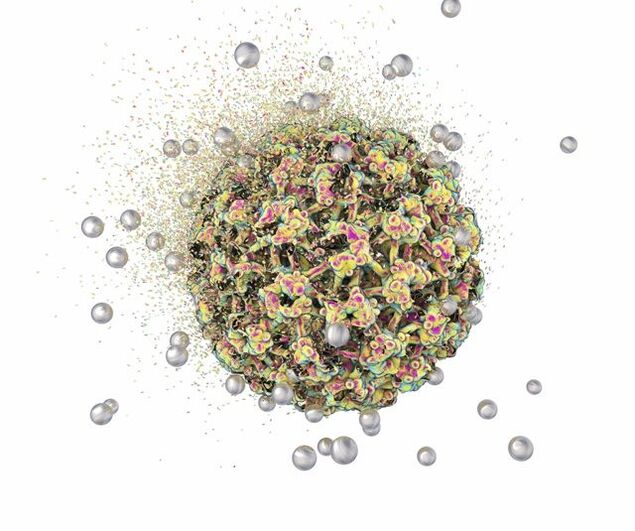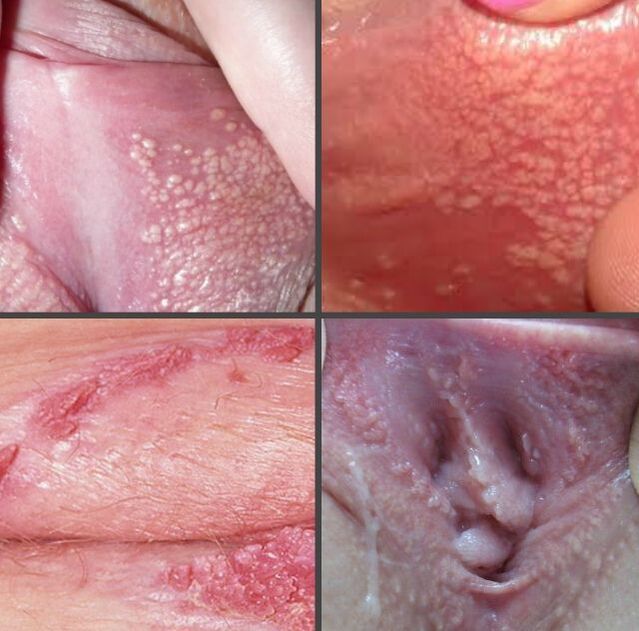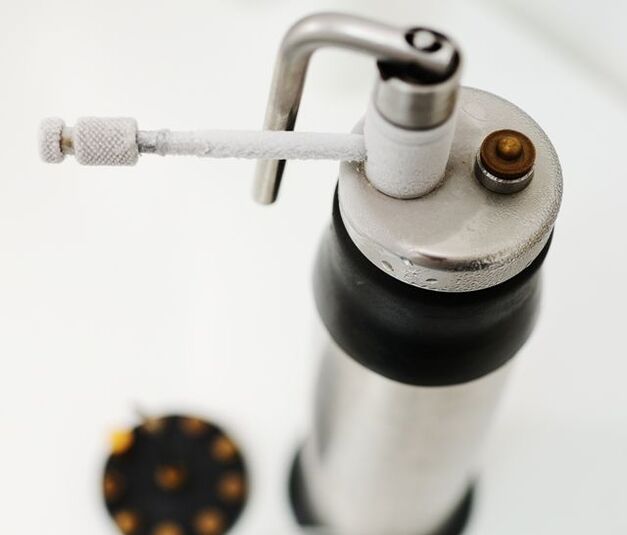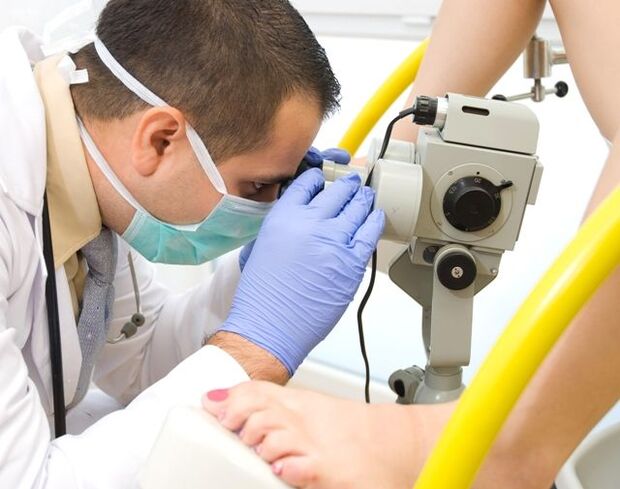
Papilloma on the labia is a pathogenic structure in the intimate area of women caused by one or more genotypes of the papilloma virus. And although not all strains that trigger the development of tumors in this area are oncogenic, the disease must be treated. Even small growths in such sensitive areas can be damaged and further cause several complications. Given the prevalence of the disease, every woman should know what to do for papilloma on the labia, which doctor to see and what procedures to carry out. Special attention should be paid to preventive measures, because practically no one is immune from papilloma on the labia minora.
Causes of papilloma on the labia

Having seen a photo of a papilloma on the labia, one should not blame the patient for promiscuity. Indeed, HPV is most often transmitted through intimate intimacy, but this is not the only possible way for pathogenic microorganisms to reach patients. HPV is also transmitted as a result of common household contact or at the time of birth. In this case, the virus carrier may not be aware of the infection. A person with a well-functioning immune system is a carrier of the disease, but will not find an unpleasant growth on himself.
In order for the papilloma virus on the labia to begin to manifest itself in the form of the proliferation of pathogenic formations, a combination of several factors is required:
- the presence of HPV in the body;
- decreased protective functions of the body;
- women's indifference to their own health.
The virus, which is not contained by the patient's immune system, damages the process of cell division, causing the appearance of benign structures. And if such a process is not stopped at an early stage, the protective function is not restored, then the woman turns to the doctor with specific questions about the removal of papillomas on the labia, and not with questions about disease prevention. A decrease in immunity, and therefore, the activation of the virus, is facilitated by constant stress, seasonal vitamin deficiency, hormonal imbalance related to age or pregnancy.
Notes!Men are less likely to develop formations in the anogenital area, even if they are carriers of the disease. The reason for this is also the specific structure of the female genital organ, which is more susceptible to the appearance of microcracks, and, thus, a local decrease in the protective function.
Symptoms of papilloma on the labia

Whatever the cause of infection (violation of hygiene standards in public places or unprotected sexual intercourse), it is important to establish the presence of the disease in time. Treatment in the early stages is easier and faster. To do this, it is enough to periodically check the intimate area yourself, as well as visit a gynecologist for preventive examinations.
Photos of papilloma on the labia can easily be found online and compared to the growing growth. During a self-examination or a routine visit to the doctor, the following may be found:
- Unit formation- small flesh-colored seals, rarely exceeding 6 mm in diameter.
- Various structures, in appearance it resembles a hen's nest. Such growth is evidence of an advanced stage of the disease. If the formation is injured during standard hygiene procedures, its color may change from flesh to dark brown.
Not all structures have a flat shape; some HPV genotypes trigger formations on thin stalks.
Some of the symptoms that require an immediate visit to the doctor are discomfort and even pain in the intimate area when performing standard hygiene procedures or sexual intercourse, and unusual discharge. Papilloma virus on the labia can initially affect hidden areas in the intimate area.
Self-study photos of papillomas on the labia and identifying similar formations do not eliminate the need to visit a doctor. Only a comprehensive diagnosis will help determine the true cause of the disease and determine the best treatment method.
A preliminary conclusion about papilloma on the labia can be made during a visual examination by a professional. However, the final diagnosis is made after a series of tests that identify not only the presence of the virus in the body, but its genotype and the concentration of active cells. A patient who has not experienced growths in the intimate area, but is suspected of being infected with the virus, will receive a similar list of tests.
List of tests:
- blood and urine to assess general health;
- tissue biopsy for growths that have already formed;
- The PCR test and the Digen test are narrow-profile tests to confirm the presence of the virus in the body and determine its strain.
The woman should also visit a gynecologist, because there is a possibility that the activation of the virus will not only cause papillomas on the outer labia, but also on the inside of the reproductive organs (vagina, cervix). Based on the test results and general assessment of the patient's health, therapy is prescribed.
Notes!Papilloma on the labia can appear under the simultaneous influence of various types of viruses, some of which are oncogenic (16, 18, 33 and others). Only a complete examination will help identify all active genotypes.
Methods for treating papilloma on the labia
A special feature of papilloma treatment on the labia is its complex nature. That is, the patient is given antiviral and immunostimulating drugs to activate the body's internal reserves to fight the virus (so-called conservative treatment), and, if necessary, a hardware procedure is prescribed to remove the formation. Mild tumors (single-sized and small) can also be treated with drugs, and in some cases even with compounds recommended by alternative medicine. Therefore, early diagnosis greatly facilitates treatment.
Remedy for papilloma on the labia
The main course of internal drug therapy is aimed at improving the protective function. The body is stimulated to fight the virus from within. For this purpose, for papilloma on the labia, the following can be prescribed:
- Antiviral drugs, blocking the development of pathogenic microorganisms.
- Immunomodulators, which, thanks to synthetic elements, helps the immune system perform its task.
- Immunostimulantwhich helps the function of the immune system.
Notes!There is no single method of drug treatment for papilloma on the labia. The doctor chooses the drug, its dosage and combination based on the patient's condition, individually in each specific case.
Removal of papilloma on the labia

Multiple small formations lead to the question of how to get rid of papillomas on the labia using surgical methods. Modern medicine has many options for hardware procedures for destruction:
- Electric current- a rather painful, but accessible method that has proven itself over the years.
- Cryodestruction- removal of formations under the influence of low temperature.
- Lasers— advanced technology allows you to remove growths painlessly using high temperatures.
- Radio knife- the most modern method, papilloma removal on the labia is performed using directed radio waves.
Traditional surgical intervention today is very rarely used if there is a risk of malignancy of the formation or its large size does not allow the removal of the papilloma by other methods. Cutting with a scalpel requires a long recovery period, and after that it can leave a scar.
Notes!All the methods listed can be used to remove papillomas on the outer and inner labia. But given the greater sensitivity of the mucous membrane of the labia minora, it is better to choose a laser or radio knife for destruction in this location.
Traditional medicine against papilloma on the labia

When treating papilloma on the labia with folk recipes, you must follow some rules:
- The composition must be prepared immediately before use for growth, unless this is specifically stated in the recipe;
- Do not exceed the dose indicated in the prescription;
- If at the time of using the product a burning sensation appears, the papilloma begins to grow or change shape, you must stop self-medication and consult a doctor;
- If the papilloma does not disappear within the specified period of time, you cannot do it without the help of a specialist.
The most popular folk recipe for papilloma on the labia is also the simplest. It is recommended to lubricate the growth with celandine or Kalanchoe juice twice a day. After 2-3 weeks, you can expect the destruction of the papilloma.
Another equally popular recipe is a compress made from finely grated potatoes. Only red sweet potato tubers are suitable for treatment. The compress must be replaced with a new one every 12 hours. This procedure is repeated for at least 30 days.
Important!The difficulty in calculating the drug concentration is the reason why most doctors do not support the treatment of papilloma on the labia using traditional medical methods. Increased doses of active ingredients can cause irritation of adjacent healthy tissue.
Preventive measures against papilloma on the labia

The appearance of growths in the intimate area is prevented by vaccination against the human papillomavirus. Such vaccination is not mandatory in post-Soviet countries, but can be done on teenagers at the request of their parents. The vaccine is recommended for girls from 9 to 15 years old, that is, before the start of sexual activity.
Also, preventive measures against papilloma on the labia are:
- compliance with personal hygiene rules;
- giving up bad habits, free association;
- proper nutrition and moderate exercise;
- preventive examination by a doctor;
- refusal to self-treat papillomas on other parts of the body.
The appearance of papilloma on the labia indicates not only the presence of viruses in the body, but also systemic failure (decrease in immunity, local inflammation or various diseases). Such signals should not be ignored. It is necessary to remove papillomas on the labia at an early stage, preventing secondary infection or their oncological transformation. Fortunately, modern medicine makes it possible to eliminate unpleasant growths quickly and almost painlessly.























